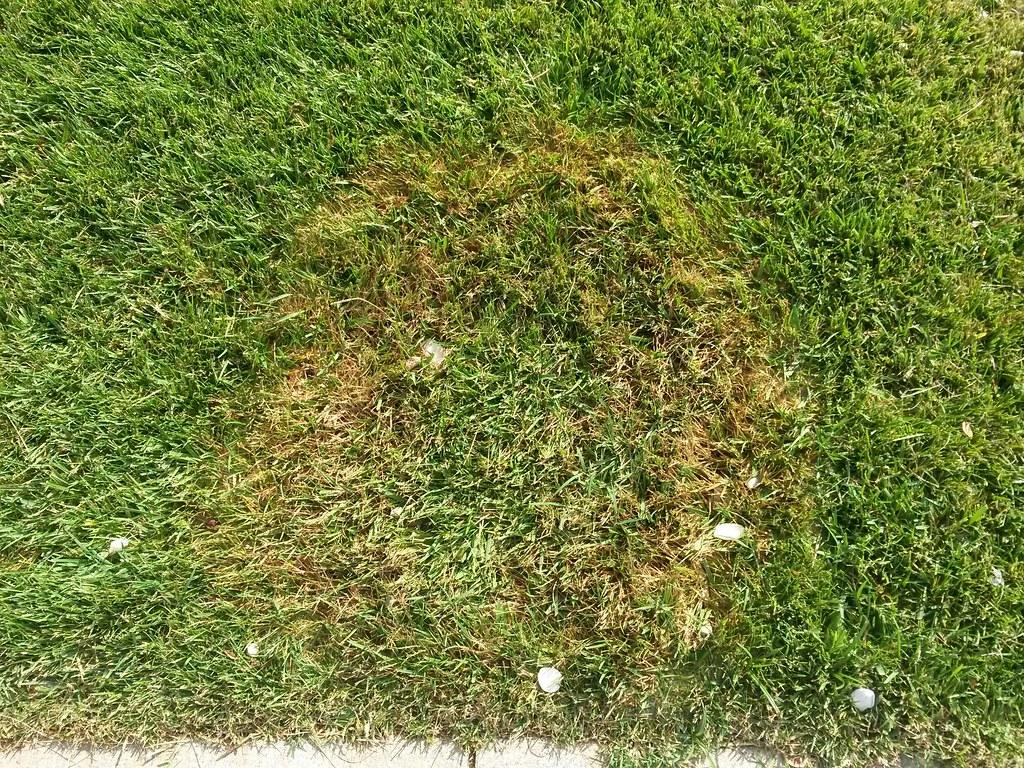
Summer patch
Magnaporthe poae
What is Summer Patch (Magnaporthe poae)?
Summer patch is a fungal disease caused by Magnaporthe poae that affects hosts like annual bluegrass and Kentucky bluegrass. Symptoms include circular yellow or tan areas of dead plants up to 1 foot in diameter, with healthy green plants remaining in the center. Dark brown or black fungal hyphae develop on roots, crowns, or stolons. Furthermore, high temperatures (85° to 95°F) in late spring, low mowing, and excessive soil moisture worsen diseases.
How does Summer Patch (Magnaporthe poae) occur?
Magnaporthe poae, the fungus causing summer patch, survives as mycelium in infected plant tissue or debris. It thrives at around 28°C and infects when soil temperatures reach 19-20°C in late spring. The fungus spreads by growing between roots during the growing season. Symptoms may remain hidden until a sharp temperature increases, especially during wet conditions. Infected plant material and mechanical equipment can also facilitate pathogen transmission.
Symptoms
1 - Plant Damage
Magnaporthe poae infects turfgrass roots, crowns, or stolons, resulting in circular patches of dead or dying vegetation. This leads to reduced turf quality, thinning, and loss of aesthetic appeal.
2 - Soil Health
The fungus causes root decay, impacting nutrient uptake and overall plant vigor. Fungal mycelium development and decomposition of infected plant material affect soil structure and nutrient cycling.
Solutions
1 - Cultural Control
1. Soil Aeration and Slow-Release Nitrogen: Enhance root growth with soil aeration and slow-release nitrogen fertilizers. 2. Improved Drainage and Reduced Compaction: Improve drainage, reduce soil compaction, and maintain healthy soil structure. 3. Thatch Control and Avoiding Drought Stress: Manage thatch buildup, avoid drought stress, and follow irrigation recommendations. 4. Appropriate Mowing Height: Mow at the higher end of the recommended height range for your turf species. 5. Soil pH Adjustment: Adjust soil pH if above 7. Consider professional soil analysis for nutrient deficiencies.
2 - Chemical Control
• Cultural controls are most effective, as fungicides are ineffective once symptoms appear. • Combination products with demethylation-inhibiting fungicides (DMIs) and strobilurins show the best control. Chemicals like DisarmTM, HeadwayTM, and ArmadaTM fall into this category. Other labeled fungicides include fluxapyroxad, propiconazole, myclobutanil, thiophanate-methyl, trifloxystrobin, and triadimefon. • Please refer to the fungicide labels and consult with local experts for precise instructions and suitability for your specific region and situation.
